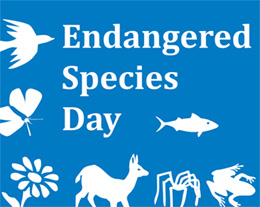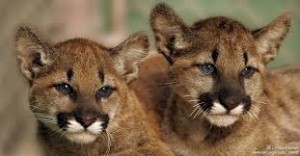Endangered Species Day: Changing the Way People View Wildlife
May 16th, 2014 | By admin | Category: Environment/SustainabilityWildfires are already raging in southern California, as the state drought worsens. The impact on residents will be great, but what about the ecosystem itself? With May 16th designated as Endangered Species Day, what will be the fate of wildlife trying to cope in a world of climate extremes?
According to a 2012 California Department of Fish and Wildlife report “California’s wildlife depends on water, just as its citizens do. With water resources becoming increasingly rare, a domino effect takes place in the ecosystem.”The report goes on to say that “Drought conditions negatively impact habitat through resource deterioration and wildfire, causing migration and behavior changes of animals. Wildlife become concentrated in remaining suitable habitat, increasing chances for disease outbreaks due to close contact.”
Joan Morris, columnist for the Bay Area News Group, recently wrote that , in California, “Bears and mountain lions will find fewer food sources in the wild, which likely will cause them to move closer to developed areas in search of food and water.” With 38 million people in California, potential conflict between wildlife and people is great.
For the immediate future, there isn’t much that can be done, other than providing food and water sources for wild animals.
Yet there is something that can be undertaken, keeping future well-being in mind, and it involves a shift in the way people view the world and all of its inhabitants.
Rights of Nature and the Web of Life
Humankind’s relationship with the rest of the planet is predicated on seeing nature as property, something over which it has ownership. The concept of Rights of Nature is grounded in the worldview that humans are part of an interdependent community of the web of life, and that nature should not be seen as property.
Around the world – from Ecuador to Pittsburgh, PA – people are advancing rights of nature in their municipalities, counties, provinces and countries, recognizing the right of nature in all its forms to exist, persist, evolve and regenerate. It enables and empowers people to act as stewards for their local ecosystem. It is a way to protect the environment and strengthen local communities, which benefits everyone.
There are other ideas that are similar and based on well-being and rights for all, which include Earth Jurisprudence (or wild law), Council of All Beings (based on the work of Joanna Macy), and Buen Vivir (“living well”).
InterconnectednessAs the number of people on the planet increases toward 8 to 10 billion by 2050, with increasingly severe weather and climate changes that will affect our world in unknown ways, exploring different concepts, some grounded in ancient wisdom, offer hope.
Humans are part of the web of life, not separate. We wipe out other species – intentionally or not – at risk to ourselves. The irony is that California and the Southwest of U.S. are lauded for the region’s natural beauty and wildlife. Population growth and development pressures, combined with extreme climate change, could change this.
Despite forty years of environmental laws and regulations in the U.S., the environmental situation is worsening. Even with a campaign on Endangered Species Day, too many species are being pushed to the brink of extinction.
While rights of nature and buen vivir are not exactly mainstream ideas (such as creating parks or wildlife corridors), the concepts offer a long-term solution to saving wildlife, people and the Earth. As California and more places endure droughts, wildfires and water scarcity, finding the public and political will to think outside the box will become imperative.
Suzanne York is a senior writer with the Institute for Population Studies.


